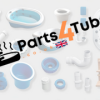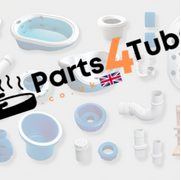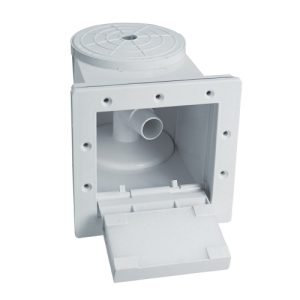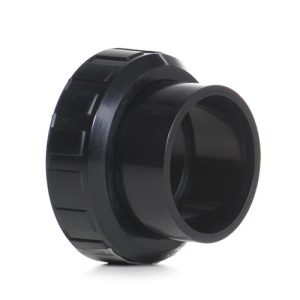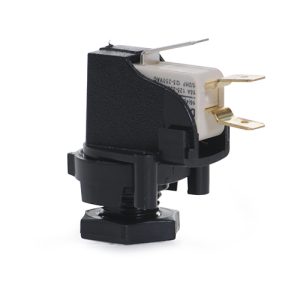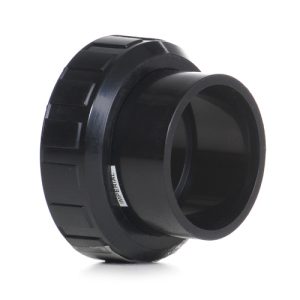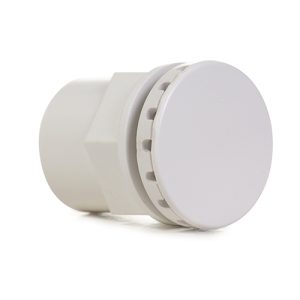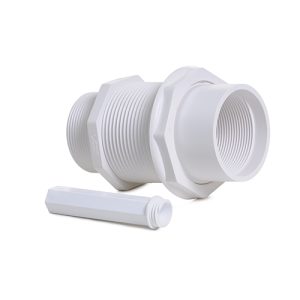BIO-UV20 / UV170 / UV250 / UV NEO 12 Quartz Sleeve LG594
£153.88 Inc VAT
Out of stock
Want to be notified when this product is back in stock?
BIO-UV Quartz Sleeve LG594 – High-Purity UV Transmission Component
As a retailer of hot tub spare parts, pool equipment, and UV sterilization components, I supply genuine replacement quartz sleeves for BIO-UV water treatment systems. This LG594 quartz sleeve is the transparent barrier that protects the UV-C lamp while allowing maximum germicidal light transmission into the flowing water stream across multiple BIO-UV model ranges.
The Critical Role of Quartz in UV Water Treatment
The quartz sleeve serves as the protective interface between the UV lamp and the water being treated. Unlike standard glass, high-purity fused quartz transmits over 90% of UV-C radiation at the critical 254nm wavelength required for microbial destruction. This specialized material must withstand constant thermal stress as the lamp operates at temperatures exceeding 100°C while surrounded by cooler flowing water, creating extreme temperature gradients that would shatter ordinary glass.
The sleeve’s transparency to UV-C light is what makes effective water sterilization possible. Even the highest-output UV lamp is rendered useless if the protective barrier absorbs or reflects the germicidal radiation before it reaches the water. Quality quartz maintains its optical clarity throughout years of operation, whereas inferior materials may yellow or cloud over time, progressively reducing system effectiveness.
Multi-Model Compatibility
This LG594 quartz sleeve fits several BIO-UV domestic and commercial ranges:
BIO-UV20 – In this compact residential system, the quartz sleeve enables effective UV treatment for smaller pools and hot tubs while protecting the lamp from direct water contact and potential damage during flow surges.
BIO-UV170 – This mid-capacity unit relies on the quartz sleeve’s thermal isolation properties to maintain optimal lamp operating temperature regardless of water temperature variations throughout the seasons.
BIO-UV250 – Designed for larger pools and light commercial applications, the UV250’s higher flow rates create additional thermal stress on the quartz sleeve, making genuine high-purity components essential for longevity.
UV NEO 12 – Part of BIO-UV’s newer NEO range, this model incorporates the same proven quartz sleeve technology while featuring updated housing and monitoring capabilities for enhanced water treatment control.
Understanding Quartz Sleeve Degradation
While quartz is remarkably durable, several factors necessitate periodic replacement. Mineral deposits from hard water accumulate on both the exterior and interior surfaces, creating an opaque coating that blocks UV transmission. Calcium scale appears as white crusty deposits, while iron and manganese staining produces brown or black discoloration. Even a thin film reduces UV output by 30-40%, severely compromising water treatment effectiveness.
Biofilm development represents another challenge, particularly on the water-side surface. Microscopic organisms establish colonies on the quartz, creating a living barrier that absorbs UV light before it reaches the bulk water. This biofilm can develop within weeks in untreated or poorly maintained systems, making regular cleaning essential.
Physical damage also occurs over time. Thermal cycling causes microscopic stress fractures, and impacts from debris in the water flow can chip or crack the quartz. Any visible damage requires immediate replacement, as even small cracks compromise the sleeve’s pressure rating and thermal isolation properties.
Cleaning vs. Replacement Considerations
Regular cleaning extends quartz sleeve life and maintains system performance. Monthly inspection during peak season allows you to remove scale buildup using appropriate descaling solutions – typically citric acid or specialized UV sleeve cleaners. The exterior surface can be cleaned while the sleeve remains installed by accessing it through the chamber housing, though complete removal enables more thorough cleaning of both surfaces.
However, cleaning cannot restore permanently etched or clouded quartz. If the sleeve shows persistent hazing after thorough cleaning, or if visible scratches, chips, or cracks appear, replacement becomes necessary. Most manufacturers recommend quartz sleeve replacement every 2-3 years under normal operating conditions, or immediately if physical damage occurs.
Installation and Sealing Requirements
The quartz sleeve installs within the UV chamber housing, sealed at both ends by specialized O-rings that prevent water from contacting the lamp while maintaining the pressure-tight water flow path. Proper installation requires careful handling – quartz is brittle and can crack if overtightened or forced into position. The O-rings must be lubricated with appropriate silicone grease and inspected for wear, as failed seals allow water intrusion that can damage the lamp and ballast.
The sleeve’s length, precisely engineered at 710mm for these BIO-UV models, ensures proper lamp positioning within the chamber for optimal UV dose delivery. The internal diameter accommodates the specific lamp diameter while maintaining the correct water gap – typically 8-15mm – through which water flows around the lamp. This gap width affects both UV transmission efficiency and the hydraulic characteristics of the chamber.
Optical Quality and UV Transmission
BIO-UV specifies high-purity fused quartz for their sleeves, manufactured to maintain UV-C transmission exceeding 90% at 254nm wavelength when new. This transmission rate directly affects the germicidal dose delivered to the water. A 10% reduction in transmission requires 10% longer exposure time to achieve equivalent microbial destruction, effectively reducing your system’s flow capacity by the same margin.
The quartz’s thermal properties are equally important. It must absorb and dissipate heat from the lamp while remaining cool enough on the exterior surface to avoid shocking when cold water flows past. The material’s low thermal expansion coefficient prevents stress fractures during the rapid temperature changes that occur during system startup and shutdown.
Impact on Water Treatment Performance
The quartz sleeve’s condition directly determines your UV system’s ability to deliver the required germicidal dose. UV dose, measured in millijoule-seconds per square centimeter (mJ/cm²), depends on lamp output, water flow rate, and transmission through the quartz. Most pool and spa applications require 30-40 mJ/cm² to achieve 99.9% reduction of common waterborne pathogens.
A heavily scaled or biofilm-covered sleeve can reduce actual dose by 60-80%, rendering the system largely ineffective despite the lamp continuing to operate normally. This invisible performance degradation explains why some pool owners experience water quality issues despite having a “working” UV system – the lamp glows, but inadequate UV reaches the water due to compromised quartz clarity.
Genuine BIO-UV Component Quality
This is an authentic BIO-UV manufactured quartz sleeve, ensuring the precise optical properties, dimensions, and thermal characteristics required for optimal system performance. Generic or third-party sleeves may use lower-grade quartz with reduced UV transmission, incorrect dimensions affecting water flow and lamp positioning, or inferior thermal properties leading to premature failure.
The LG594 designation indicates BIO-UV’s specific engineering specification for this component, including quartz purity grade, dimensional tolerances, and quality control standards. Using genuine components maintains the system performance and water treatment effectiveness that BIO-UV units are designed to deliver.
Technical Specifications
| Specification | Detail |
|---|---|
| Product Code | 7111676055 |
| BIO-UV Part Number | LG594 |
| Compatible Models | BIO-UV20, UV170, UV250, UV NEO 12 |
| Length | 710mm |
| Material | High-Purity Fused Quartz |
| UV-C Transmission | >90% at 254nm (when new) |
| Weight | 1.28 kg |
| Dimensions (L x W x H) | 710mm x 120mm x 120mm |
| Volume | 0.010224 m³ (packaged) |
| Mounting | Internal chamber installation with O-ring seals |
Maintenance Recommendations for Extended Service Life
To maximize quartz sleeve longevity and maintain UV system effectiveness, establish a regular inspection schedule. Monthly visual inspection during swimming season allows early detection of scale buildup or biofilm development. Clean the sleeve whenever visible deposits appear, using appropriate descaling agents and soft cloths to avoid scratching the quartz surface.
When cleaning, never use abrasive materials or harsh chemicals that might etch the quartz. Remove the sleeve carefully according to manufacturer instructions, supporting the entire length to prevent stress concentration. Inspect O-rings simultaneously and replace them if they show compression set, cracking, or loss of elasticity.
Monitor your water chemistry to minimize scale formation. Maintaining proper pH and alkalinity levels reduces mineral precipitation on the quartz surface. In areas with particularly hard water, consider water softening or filtration upstream of the UV unit to extend cleaning intervals and sleeve life.
Ensuring Continuous Water Treatment Protection
Maintaining a spare quartz sleeve ensures you can immediately restore UV treatment capability if the installed sleeve cracks or becomes irreparably fouled. The relatively long dimensions and fragile nature of quartz sleeves make them vulnerable to damage during handling, shipping, or installation, making backup availability particularly valuable for maintaining continuous water treatment protection in commercial installations or during peak season when immediate replacement is critical.
| Weight | 1.28 Kilograms |
|---|---|
| Length | 0.71 Meters |
| Width | 0.12 Meters |
| Height | 0.12 Meters |
| Volume | 0.010224 CubicMeters |
| Supplier | GoldenC |
Related products
Spares

